A damaged antique oak card catalog gets restored and refinished to its original beauty!
One of my favorite aspects of antique furniture and decor is its undeniable character and history.
The dings, dents, and worn finish add depth, charm, and interest to any space.
Sometimes, all they need is a good cleaning and wood conditioner to bring them back to life. Other times, a little more work and a complete refinish and restoration are required to maintain their charm and beauty.
Just the other week, I came across a small six-drawer antique card catalog while checking out local online auctions.
It was a little worse for wear with a cracked, uneven, and damaged finish. I could tell right away though that it was an authentic oak antique card catalog that had potential.
SUPPLIES NEEDED TO REFINISH AN ANTIQUE CARD CATALOG
- Sanding pads (80/150/320 Grit)
- Wallpaper scraper
- Disposable gloves
- Screwdriver
- Paintbrush
- Paper towels
HOW TO REFINISH AN ANTIQUE CARD CATALOG
I was excited to get started on refinishing the card catalog and cranked it out in one incredibly hot afternoon. I started by removing all the old hardware and setting it aside to clean and reattach later.
I prefer to sand off the majority of old stain rather than use a furniture stripper. To remove the very dark finish from the card catalog I started sanding with 80-grit sandpaper then worked my way up to 320-grit.
How cool is it that while sanding, I unexpectedly uncovered the original Shaw Walker maker mark?
I knew it needed to be salvaged, so I carefully sanded around the mark making sure not to sand it off.
To remove the stain from the corners and detailed trim, I switched to using Citristrip Stripping Gel. I don't like dealing with messy strippers, but it can come in handy when removing stain from hard-to-reach places.
I repeated the process on the other side of the card catalog and the fluted front detail. I wiped off as much Citristrip and old stain as I could then cleaned up the rest with Mineral Spirits.
After the wood was dry, I applied one coat of Special Walnut wood stain and two coats of water-based matte poly.
To remove the stain from the corners and detailed trim, I switched to using Citristrip Stripping Gel. I don't like dealing with messy strippers, but it can come in handy when removing stain from hard-to-reach places.
I poured Citristrip around the edge and along the curved trim, covered the area with plastic wrap, and let it sit for about 30 mins. Covering the Citrisrip keeps it from drying out and extends the time it can be left on a surface.
You may also like: How to Remove Spray Paint From Brass
Once the majority of the stain was removed, I gave the entire card catalog another good sanding then wiped it down again with Mineral Spirits.
I prefer the look of age and patina and hadn't planned on cleaning the original hardware, but it really was pretty cruddy. A good soak in hot soapy water and a little scrubbing with Bar Keeper's Friend was all it needed to remove the majority of build-up.
The refinished antique oak Shaw Walker card catalog still isn't perfect, but it sure does look a lot better with its new brighter finish.
It's fresh and clean, yet still has some of its original dings, character, and charm!
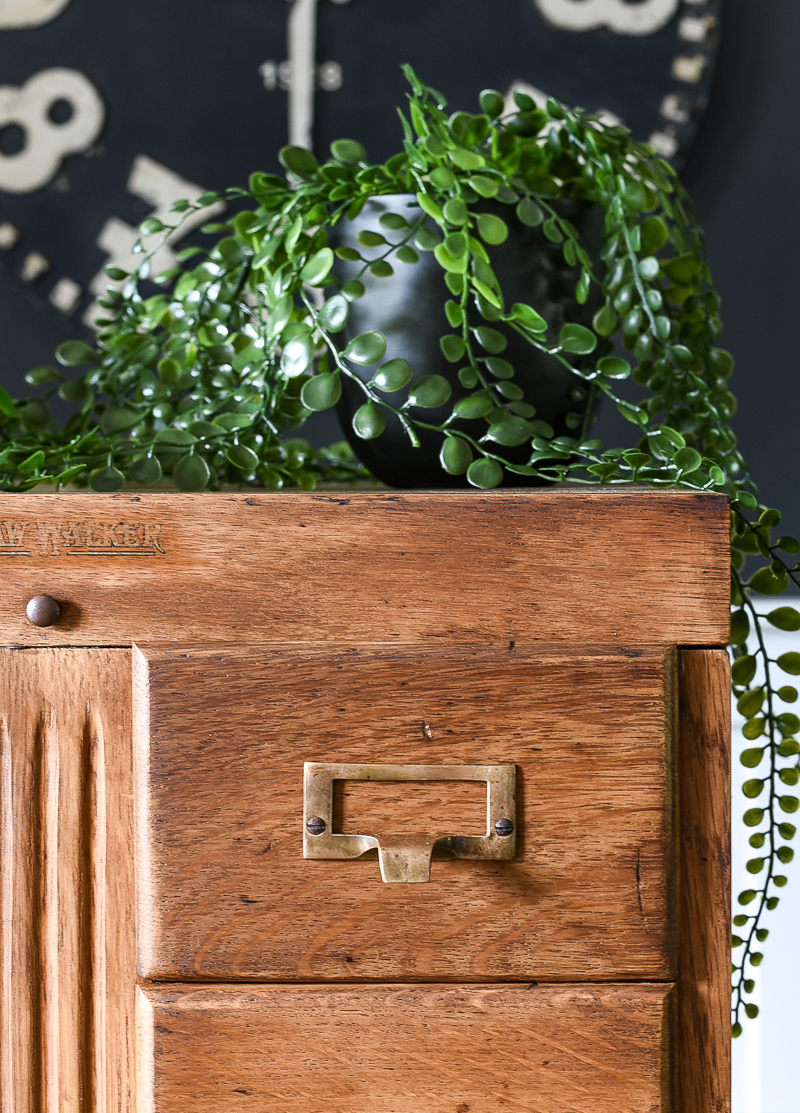
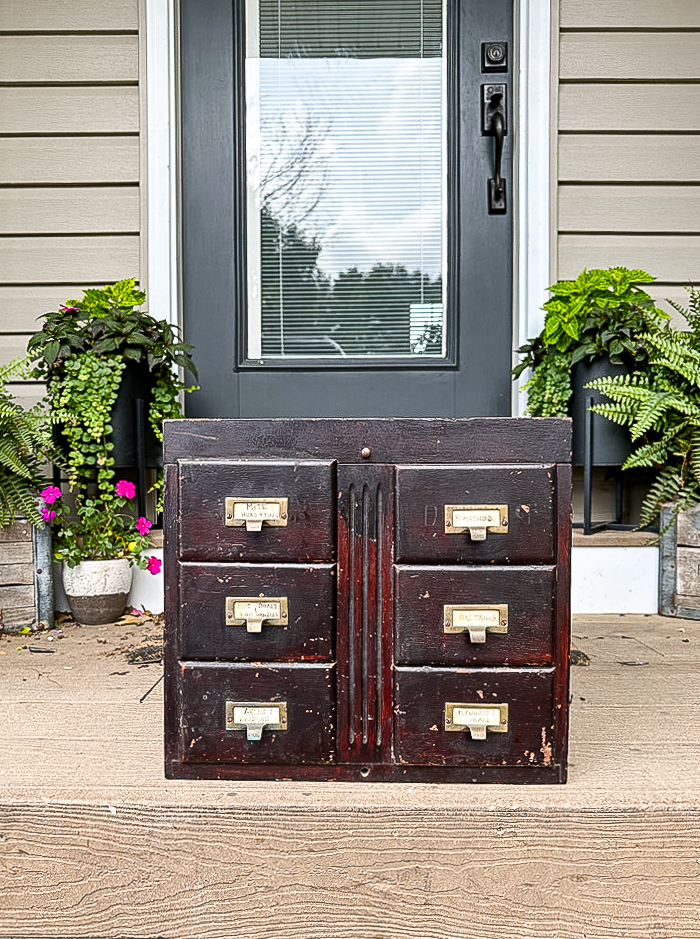

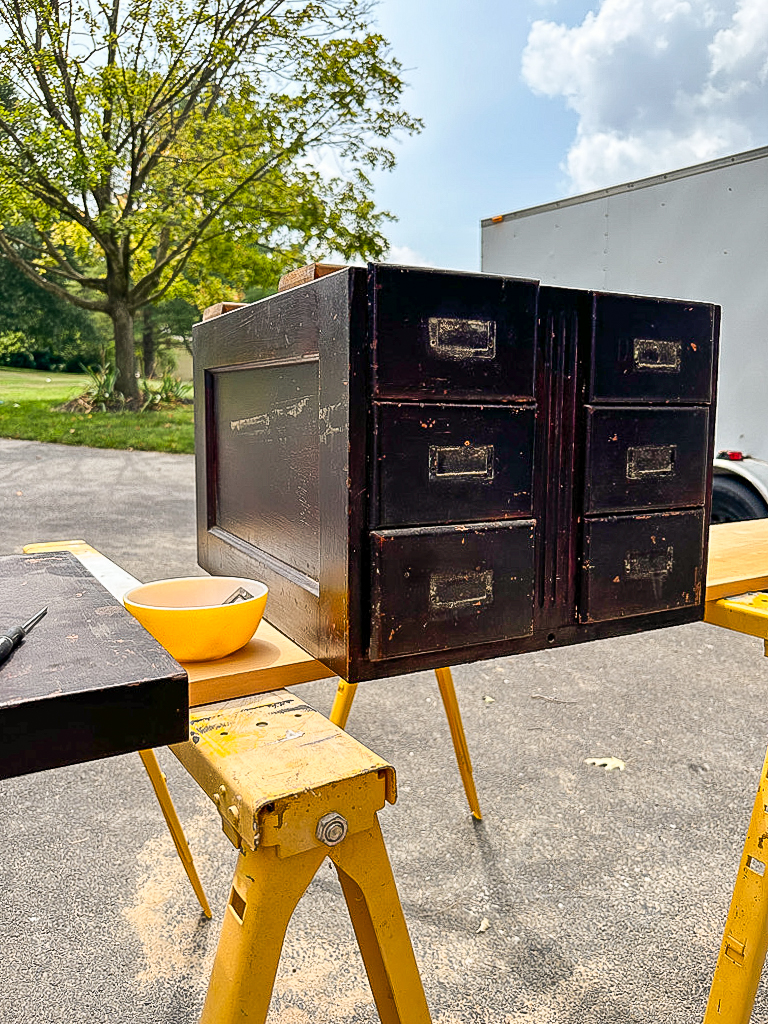
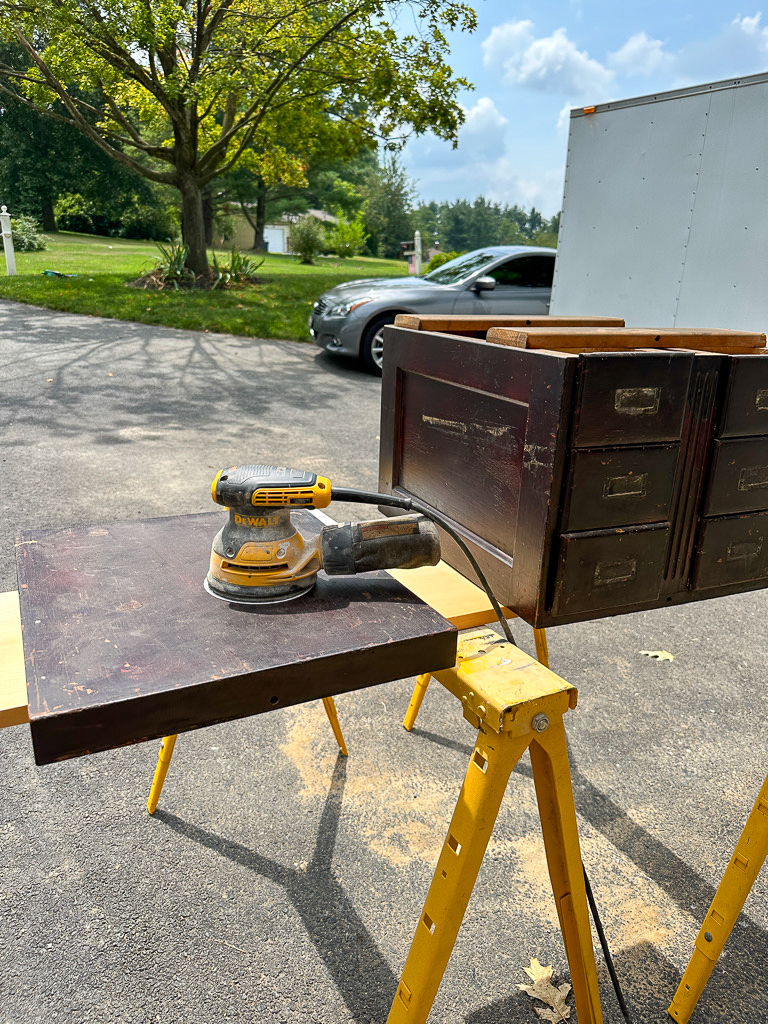
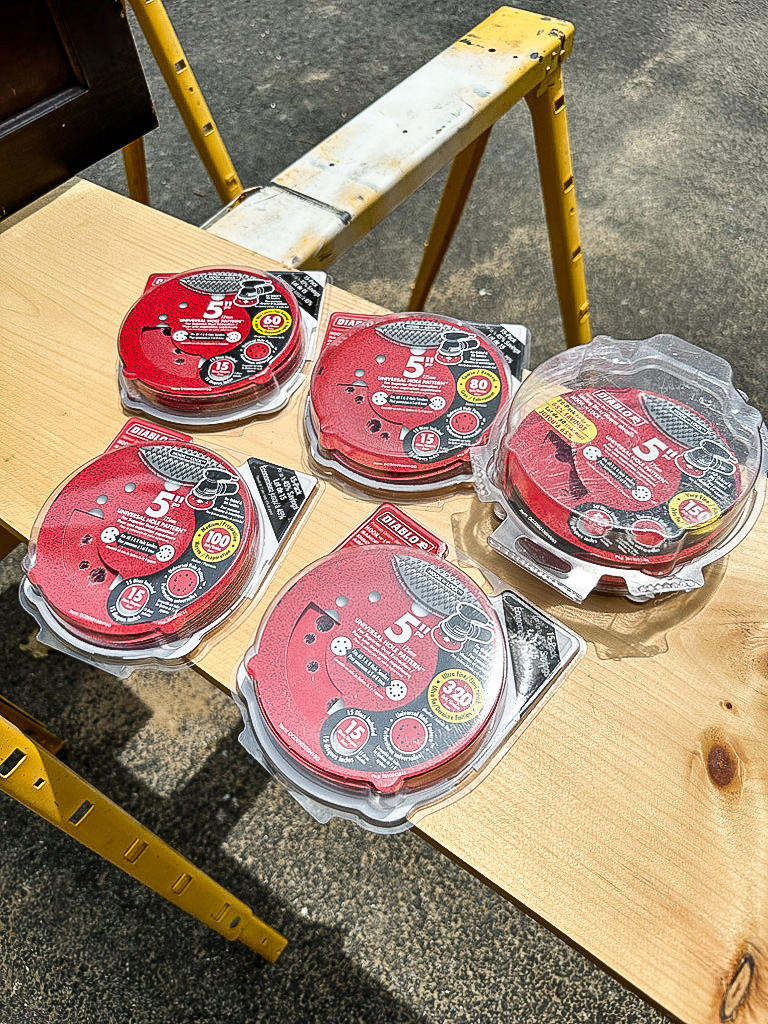

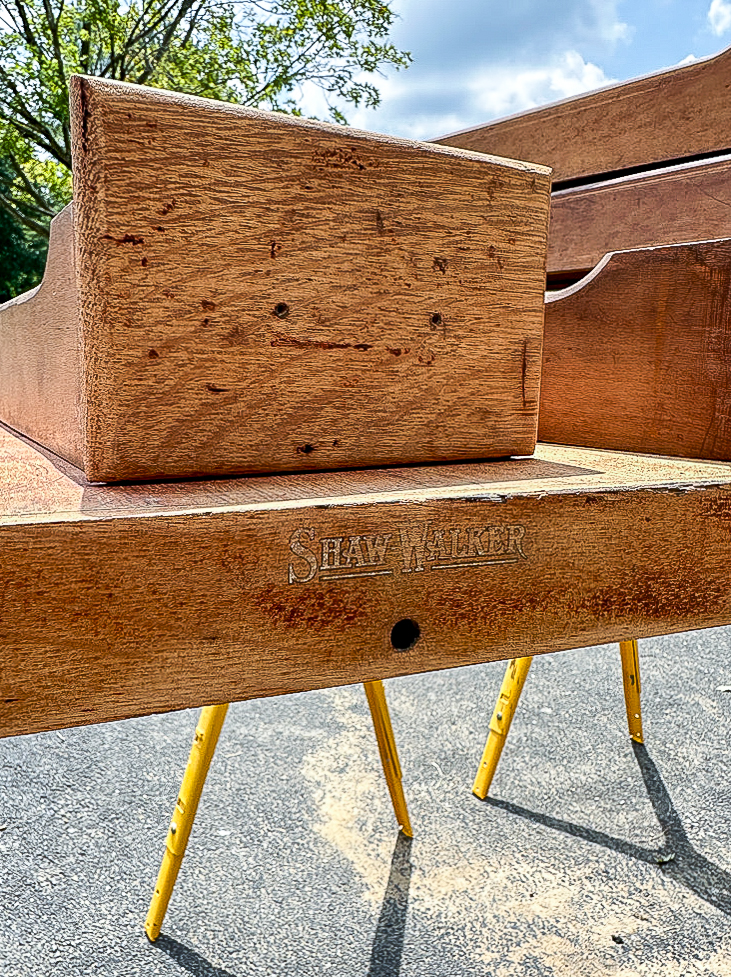

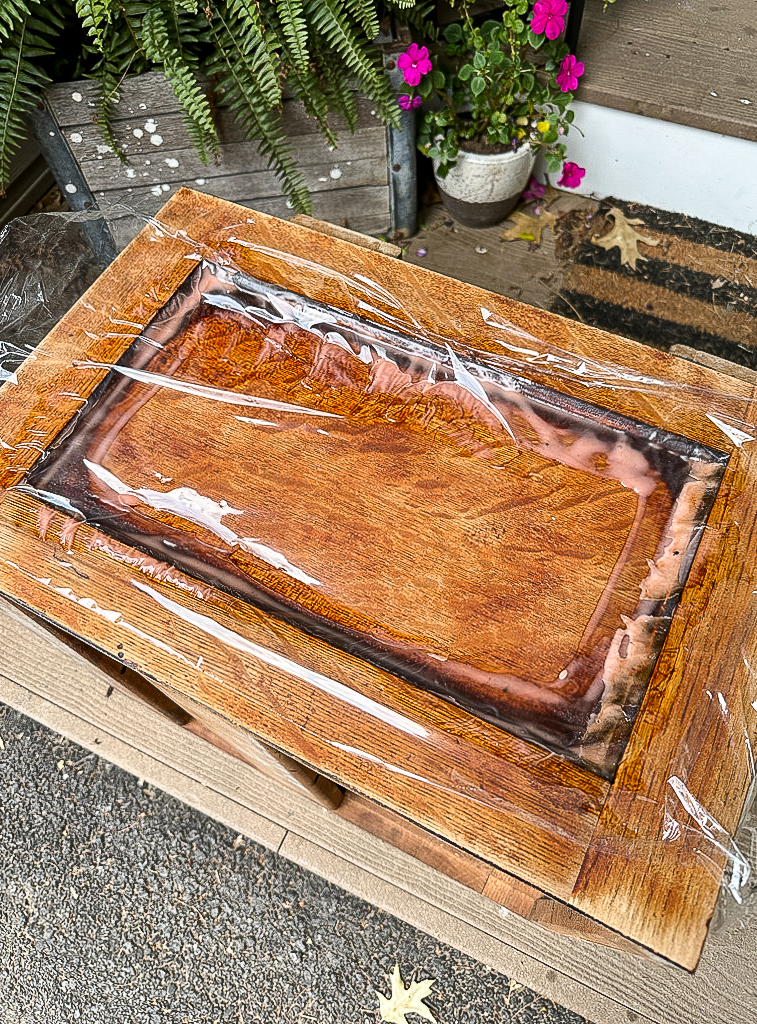
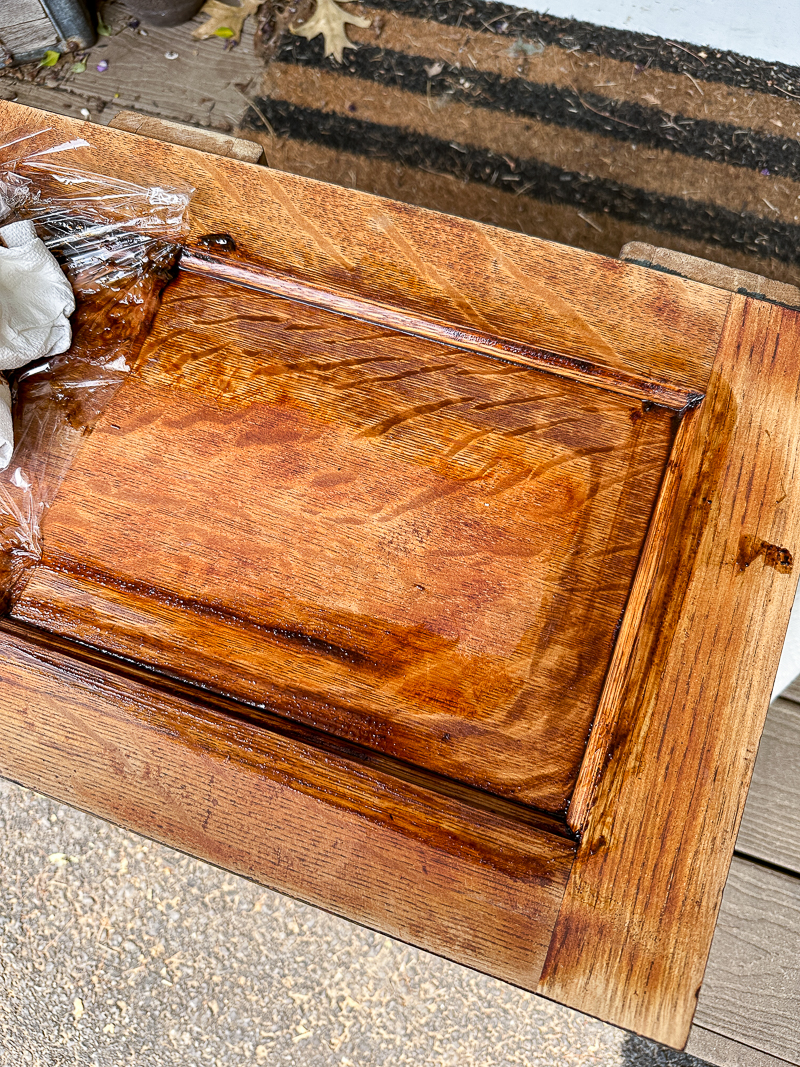
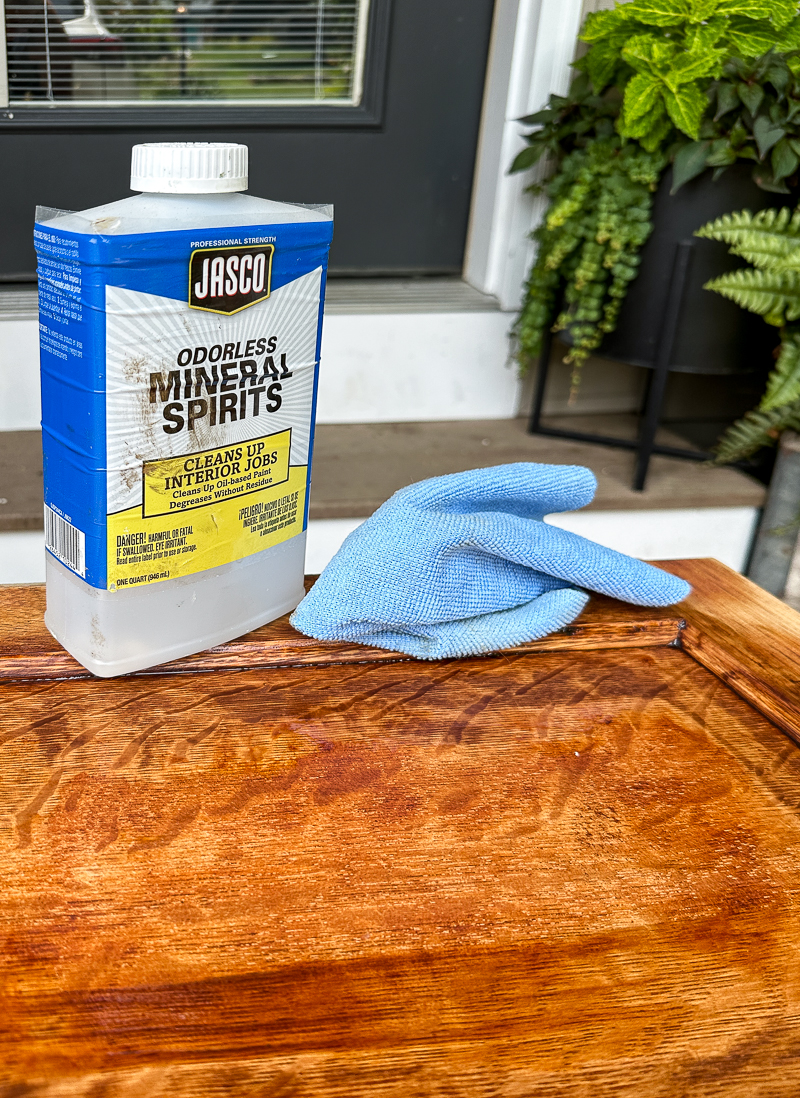
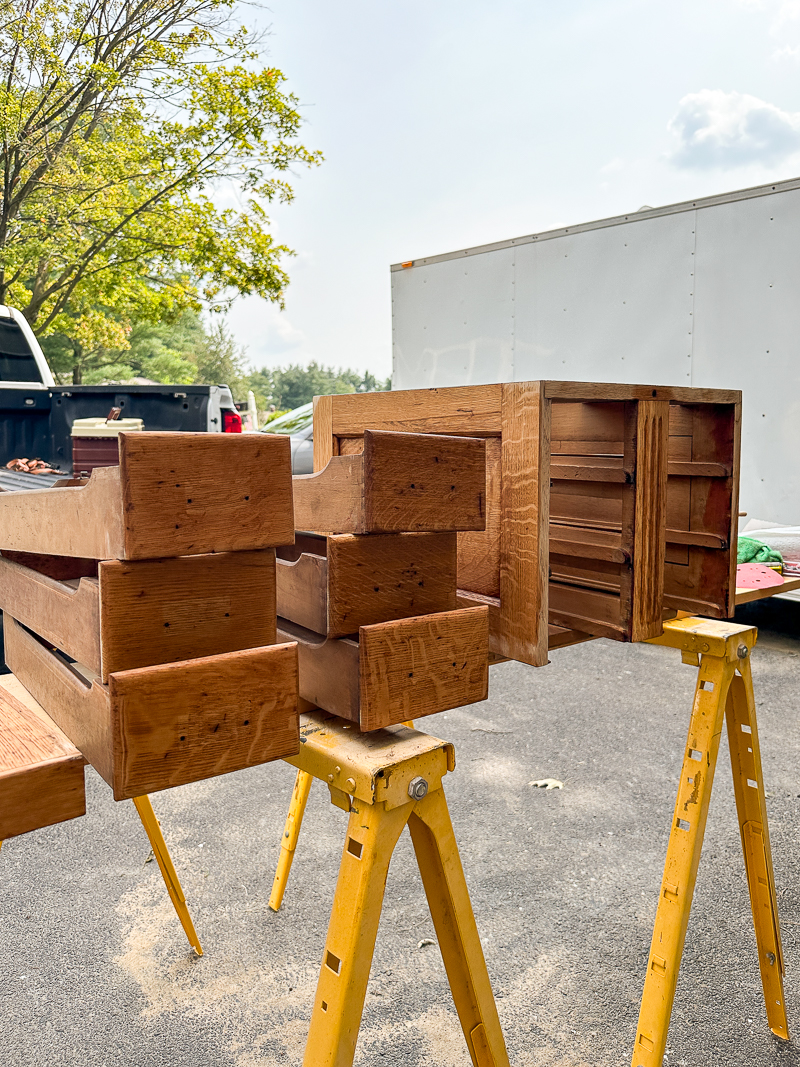




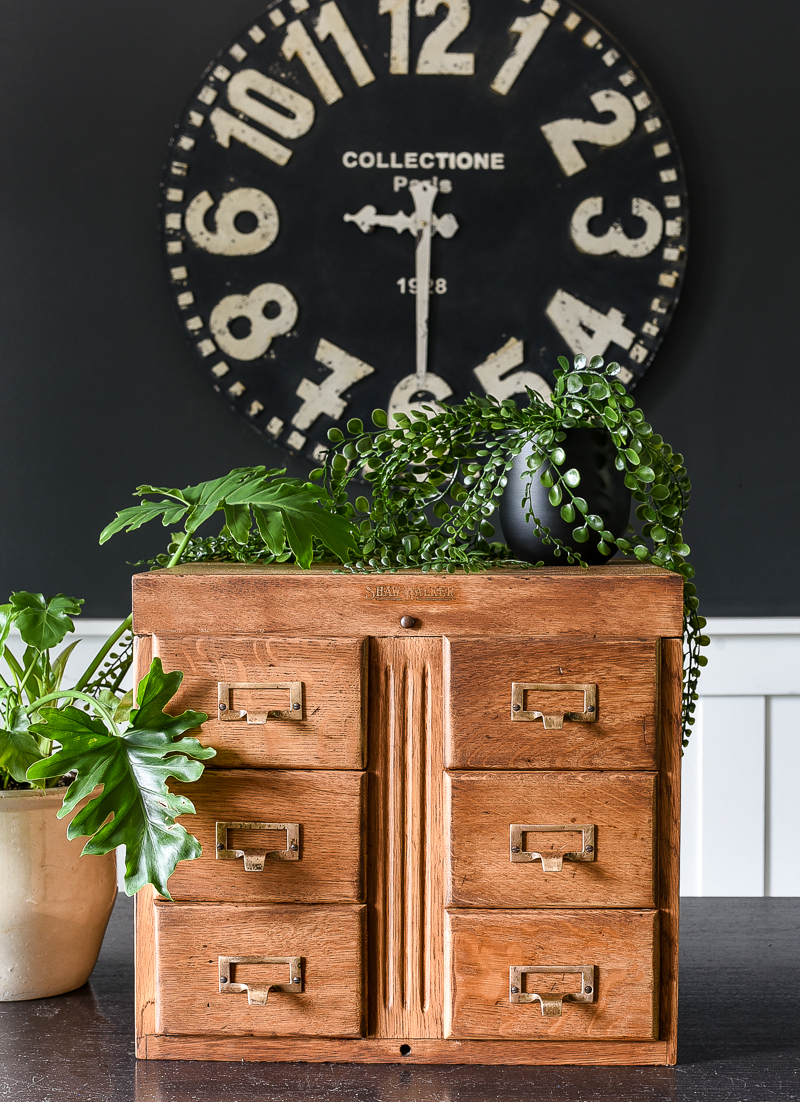







0 comments: